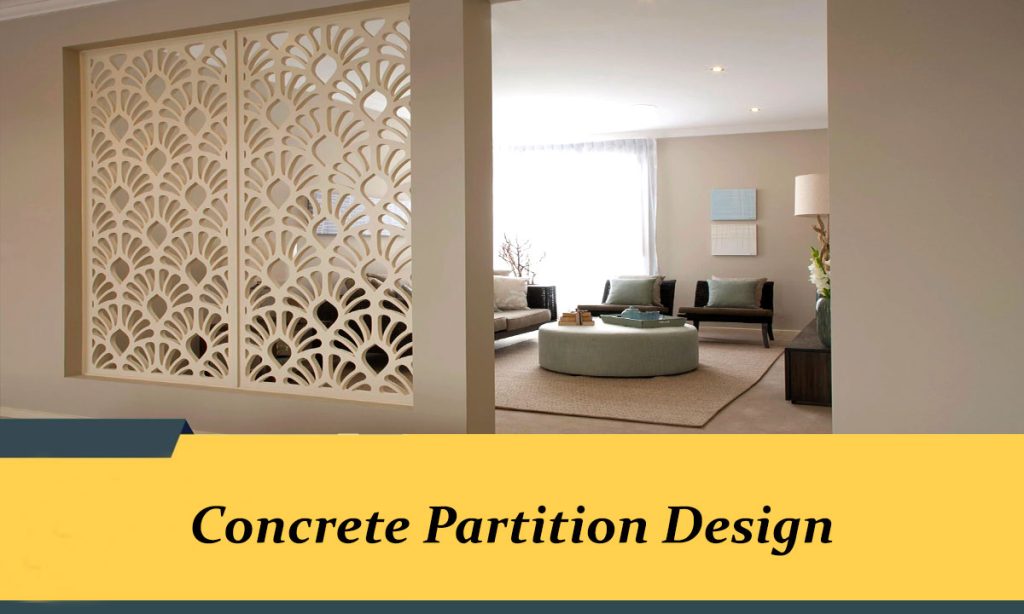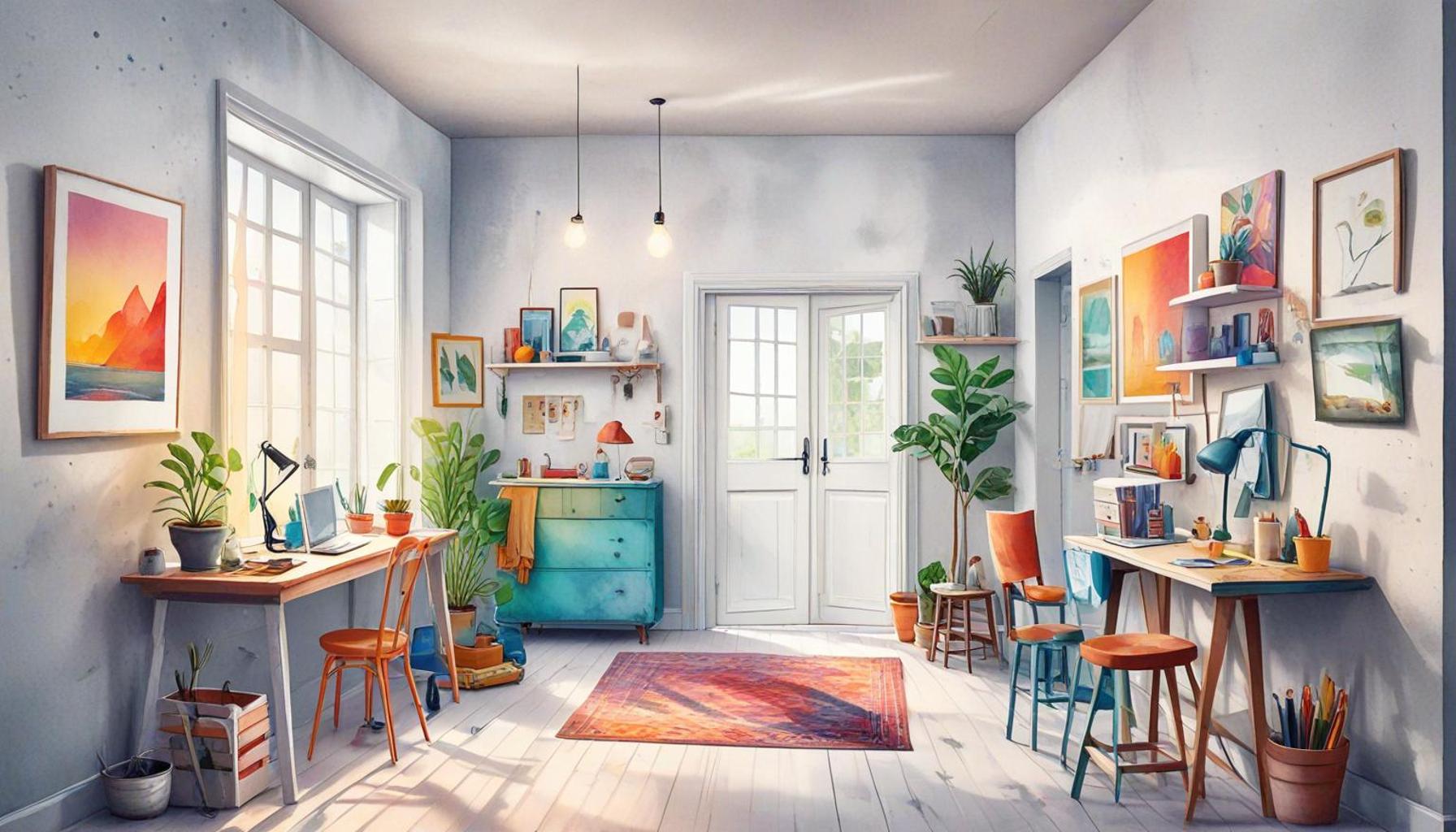Creating Functional Zones: How to Divide Spaces Minimally to Increase Efficiency

Transforming Spaces for Optimal Functionality
In today’s fast-paced world, effective space management is crucial for enhancing productivity. Creating functional zones within a workspace allows individuals and teams to work more efficiently, reducing clutter and distractions. This approach can transform how we engage with our environments, whether at home or in the office.
Functional zoning can be achieved by dividing areas into specific purpose-driven segments. For instance, a well-designed office might have designated areas for quiet work, collaborative meetings, and casual breaks. This segmentation not only fosters focus but also creates a more dynamic atmosphere. Here are some key benefits of functional zoning:
- Maximized Efficiency: By designating areas for particular tasks, users can concentrate better. For example, a dedicated ‘focus zone’ with minimal distractions can significantly boost concentration during important projects.
- Enhanced Comfort: Personalized spaces can be adapted to the needs of each user. An employee who prefers a standing desk for certain tasks can have a designated adjustable workstation, making their work experience more enjoyable and minimizing discomfort.
- Visual Clarity: Clearly defined zones aid in organizing both physical and mental spaces. By understanding which area is for collaboration or solo work, users can navigate their environment with intent, reducing time spent deciding where to go next.
Adopting a minimalistic approach to dividing spaces does not necessitate sacrificing style or comfort. It’s fundamentally about creating purpose-driven environments that support functionality while also being aesthetically pleasing. Effective zoning also considers several essential aspects:
- Natural Flow: Aligning zones in a way that promotes easy movement and accessibility encourages a seamless transition between tasks. For instance, placing coffee stations near collaboration areas invites spontaneous discussions and boosts team bonding.
- Adaptable Design: Utilizing furniture and decor that can easily adjust to meet evolving needs is vital for maintaining an effective workspace. Modular furniture that can be reconfigured for different activities fosters a versatile environment.
- Technology Integration: Incorporating smart solutions, such as wireless charging stations or connected conference tools, enhances productivity and connectivity, making it easier to transition between in-person and virtual interactions.
As we explore the principles behind creating functional zones, we’ll uncover strategies to revolutionize both personal and professional spaces, ultimately fostering a more efficient workflow. By understanding the unique needs of individuals and teams, we can harness the power of intentional design to create environments that not only elevate productivity but also inspire creativity and collaboration.
DISCOVER MORE: Click here to learn about intentional choices for minimalism

Understanding the Principles of Functional Zoning
To successfully create functional zones, one must first understand the underlying principles that govern effective space division. Proper zoning isn’t merely about erecting physical barriers; it’s about creating a fluid and intentional use of space that elevates productivity. A well-thought-out functional zoning strategy can significantly impact how individuals and teams interact with their environment.
One primary consideration when designing functional zones is the user experience. The layout should be intuitive, allowing individuals to easily shift between areas based on their changing tasks. For instance, creating clearly defined spaces for focused work, collaborative efforts, and relaxation encourages a natural transition between different modes of operation. A study by the Interior Design Institute highlighted that workplaces featuring distinct functional zones reported a 22% increase in employee satisfaction, directly correlating to productivity.
Furthermore, consider the acoustic environment when designing these zones. Background noise can significantly impact concentration levels, especially during tasks requiring critical thinking. Therefore, incorporating soundproofing elements or creating quiet zones in areas designed for high-concentration work can elevate output. Spaces that manage sound effectively help individuals maintain their focus without disruption, allowing for deeper engagement during complex tasks.
Here are some crucial factors to consider when establishing functional zones:
- Purpose Orientation: Each zone should cater to specific activities. A brainstorming nook may require dynamic furniture and writable surfaces for collaboration, while a quiet area should foster calmness with soft colors and comfortable seating.
- Environmental Options: Natural light plays a crucial role in productivity. Zones positioned near windows not only promote well-being but can also energize employees, enhancing overall efficiency.
- Visual Separation: While you don’t need to build walls to define spaces, using color, furniture arrangement, and textures can visually articulate different zones, guiding users without imposing limitations.
- Social Elements: Incorporate areas that encourage social interactions, such as communal tables or lounges, to foster teamwork and connectivity among employees. Integrating social zones helps combat isolation, especially in larger workspaces.
By adhering to these principles, organizations and individuals can establish vibrant, purpose-driven environments that reduce confusion and optimize workflow. Rather than adopting a one-size-fits-all approach to space management, the essence of functional zoning lies in customizing environments to meet diverse needs. With a thoughtful approach, even the simplest spaces can evolve into sophisticated arenas for collaboration, focus, and engagement.
As we delve deeper into the nuances of functional zoning, we will explore practical strategies to implement these concepts effectively, ensuring that both aesthetic appeal and utility go hand in hand. It’s time to unlock the full potential of your spaces by embracing the art of intentional design.
Creating functional zones within a space is not merely an exercise in aesthetics; it’s a strategic approach to enhancing efficiency and productivity. When considered thoughtfully, these zones can transform a chaotic environment into a well-structured haven for work and leisure. It allows individuals to focus intently within designated areas, minimizing distractions and fostering creativity.One effective method of dividing spaces is by utilizing modular furniture. These flexible pieces can be moved and rearranged effortlessly, allowing for quick transitions between different activities. For example, a sofa can serve as a barrier between a relaxation zone and a work zone, while also providing comfort and mobility.Another crucial aspect is the use of color and light. Each zone can be accentuated with specific colors that evoke the desired mood or mindset. Bright colors may stimulate energy in a workspace, while softer tones can promote relaxation in a leisure area. Natural light is also vital; positioning workstations near windows enhances focus and well-being, combined with strategic lighting solutions that serve different purposes throughout the day.Moreover, integrating technology can streamline operations within the functional zones. Smart storage systems allow for easy access to tools and materials, reducing clutter and improving workflow. Digital solutions, such as apps or automation systems, can also enhance communication and task management, thereby bridging the gap between zones seamlessly.It’s important to note that personal preferences and behaviors should guide the design of these functional zones. Engaging the input of those who will use the space can yield valuable insights into how best to configure each area. In doing so, you foster an environment that not only meets aesthetic criteria but also aligns perfectly with the users’ needs, resulting in enhanced overall functionality.As you embark on refining your space into clearly defined functional zones, look beyond mere partitioning. Explore innovative solutions, engage with various design elements, and ultimately aim to create an environment that resonates with both practicality and inspiration. Tools like area rugs or plants can further define boundaries and enhance the atmosphere.Continue your exploration of this topic with detailed information on design considerations and practical implementations that can rejuvenate any space, making it both functional and pleasant. Stay tuned for comprehensive guides and insights to expand your understanding of creating efficient functional zones.
DISCOVER MORE: Click here for practical tips
Implementing Functional Zoning Strategies
The journey of creating functional zones is as much about strategy as it is about aesthetics. To effectively maximize space and enhance productivity, organizations must adopt tactical methods during the design and implementation phases. This involves a comprehensive analysis of how space is currently utilized and how it can be transformed into a more efficient layout.
One effective strategy is to conduct a thorough space audit. This process involves evaluating the current usage patterns, identifying traffic flows, and recognizing underutilized areas. Tools such as observation, surveys, or even space management software can help collect data to inform decisions. For example, Google has been known to employ sophisticated tools that analyze employee movements and preferences in their offices, leading them to design their functional zones based on empirical findings rather than assumptions.
Additionally, organizations should also consider the concept of flexibility in their zoning design. Adaptable spaces that can easily transition between different functions are particularly advantageous in dynamic work environments. Movable furniture, modular partitions, and multifunctional spaces cater to various needs without committing to permanent structures. This concept resonates well with tech start-ups, where team sizes and project demands frequently shift, requiring a layout that can be transformed quickly to facilitate collaboration or focus.
Another refined approach involves integrating technology into functional zones. Smart tools and applications can streamline workflows and enhance the user experience. For instance, equipping collaborative zones with digital boards and conference links enables seamless transitions from brainstorming sessions to virtual meetings. This technological integration fosters engagement and allows for effective idea exchange, which is critical in today’s interconnected workspace.
Importantly, the ergonomics of each functional zone cannot be overlooked. Design that incorporates ergonomic principles promotes not only health and safety but also enhances productivity. Comfortable seating, adequate desk height, and proper lighting are crucial considerations. A study conducted by the American Society of Interior Designers (ASID) revealed that improved ergonomics in the workplace can lead to a 20% increase in employee performance. Spaces that prioritize physical well-being create an environment conducive to creativity and focus.
Establishing clear zones for specific demographics is also a critical aspect of functional zoning. Different team members may have varying preferences for how they work best. For instance, younger employees might thrive in dynamic and collaborative settings, while more experienced staff may prefer quiet zones for deep work. Understanding these nuances allows for tailored spaces that cater to diverse needs, thereby fostering inclusivity and enhancing overall workplace morale.
A thoughtful implementation of functional zoning should also consider the impact of color and design elements. Research consistently shows that particular colors can influence mood and productivity. Warm tones can energize, while cooler hues promote calmness. By aligning color schemes in functional zones with their intended purpose, organizations can bolster the psychological efficacy of each area.
In conclusion, the art of creating functional zones relies on a multi-faceted strategy that blends analysis, adaptability, technology, ergonomics, and color psychology. As workspaces continue to evolve, understanding and implementing these strategic approaches to space division will play a pivotal role in nurturing environments that boost efficiency and engagement. Look out for upcoming trends and innovations in space design that promise even more exciting avenues for enhancing functionality and productivity alike.
DISCOVER MORE: Click here to find practical strategies for a clutter-free space
Conclusion
In an era where efficiency is paramount, creating functional zones within workspaces is not just an option; it’s a necessity. Through strategic implementation of a well-balanced layout that focuses on flexibility, technology integration, and ergonomic considerations, organizations can cultivate environments that substantially enhance productivity. Employing tools such as space audits to evaluate utilization rates paves the way for informed decisions, ensuring that every square foot of space is optimally used.
The importance of tailoring zones to specific demographics cannot be overstated, as varying work preferences can significantly impact employee engagement and satisfaction. By fostering areas that cater to diverse styles—from dynamic collaboration spaces to quiet, focused workstations—companies can bridge the gap between individual preferences and team objectives. Furthermore, thoughtful design elements such as color psychology can invigorate motivation and morale, directly influencing performance levels.
As innovation continues to reshape our understanding of workspace dynamics, leaders must remain vigilant about emerging trends and technologies that enhance functionality. The integration of smart tools and adaptable environments will be critical in staying ahead in a competitive landscape. Ultimately, creating functional zones is not merely about dividing space; it’s about crafting a holistic ecosystem that nurtures creativity, collaboration, and efficiency—all essential components in today’s fast-paced work culture. Embrace these strategies to unlock the potential for a better, more productive workspace.



